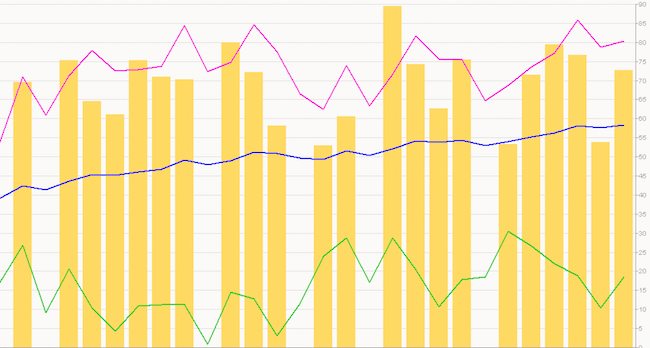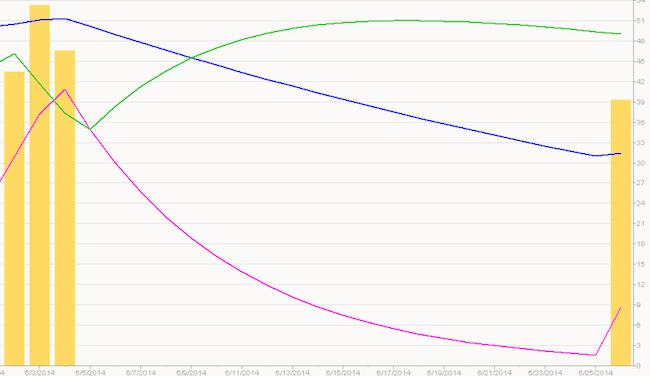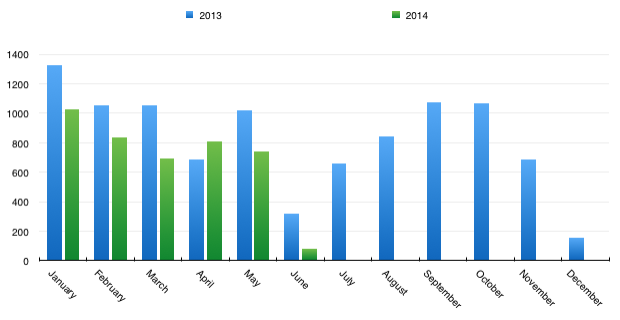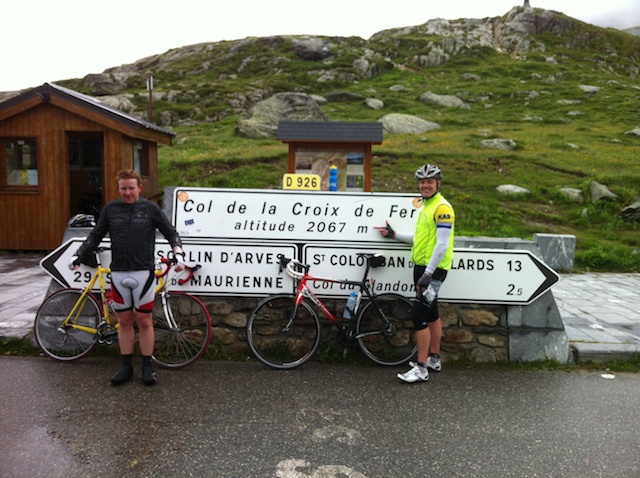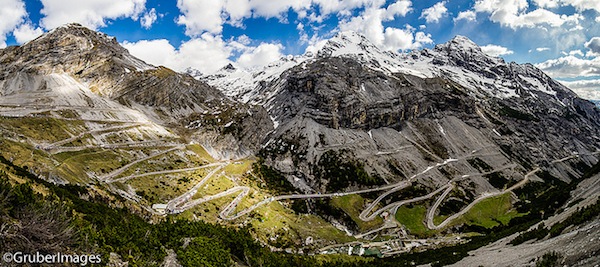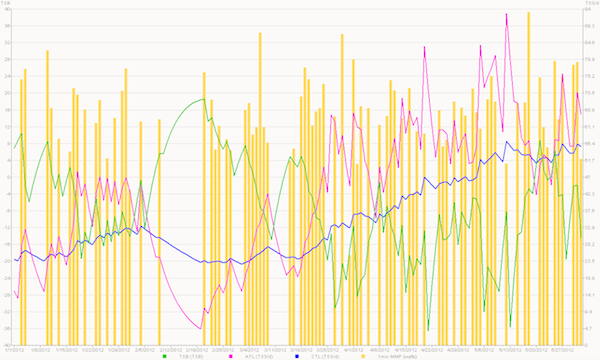I was pretty tired after the last 10 days of climbing, and Alpe d’Huez had been bloody hard work on Wednesday, so I was worried that maybe I’d overdone things in the run up to the big day. I did nothing on Thursday and then on Friday I went for a 40min cruise along the valley floor followed by a dip in the local swimming pool featuring some spectacular views from the water. Friday evening was spent giving the bike the once over, fitting my transponder and race number and making sure I had all my gels/powders packed and ready to go for the morning.
The alarm went at 5.30 and it was followed by a quick shower, down to breakfast and an attempt to force-feed myself in preparation for a big day. Pre-race nerves (in a good way) usually mean that I have bugger all appetite in the morning, but I knew it was important that I load up for the day ahead as I’d never be able to eat enough along the route to keep up with energy demands. Once that chore was complete I threw the bike in the back of the car and drove down to the main road. There was no way I would be able to ride the 10km climb back to the guest house at the end of the day!!
With 7,000 participants or so, start times are staggered with the first group off at 7, the second at 7.30 and the final group at 8. Out of the guys in the house, Dan & Simon were in the first group, Giles the second and myself and the Irish lads were in the final group. Hugh and Joe were aiming to crack eight hours which was way too fast for me, but Conor and Cormac had been climbing at my pace up Col du Glandon so we’d probably end up together. We joined the back of the 8am start queue and slowly shuffled forwards, crossing the start line at 8:11 with 174km ahead of us.
I’d worked out split goals based on the recon rides I’d done and had taped them to my bike’s stem. The descent off the Glandon was time neutralised as it’s considered too dangerous with so many riders still bunched together early in the event. Bearing this in mind, I’d structured things to aim for a finish time of 11hrs, which, when the descent was subtracted, should mean I’d attain the silver medal goal time of 10h20 for my age group. That was all ahead of me as I left Bourg, hitching on to a line of Dutch guys flying towards Allemond. I may have been taking it easy, but I figured I might as well take a tow if one was being offered. After the quick zig-zag up the Barrage there were a couple of flat kilometres and then we were into the first climb of the day, Col du Glandon (profile). I could see Conor and Cormac a bit below me as they hadn’t jumped a Dutch train, but I figured they’d catch me on the climb so I kept going at a nice comfortable pace, keeping the legs spinning over and using the power meter to pace myself. Having ridden the climb a days ago was a big help, as I knew where the tough bits were and could adjust accordingly. Also, it wasn’t raining like it had been on Monday which was a big help, as was the fact that there were so many other cyclists around. As a result I made it to the top with 2h20 on the clock, almost 25 minutes ahead of schedule and I’d been riding easier than on Monday.
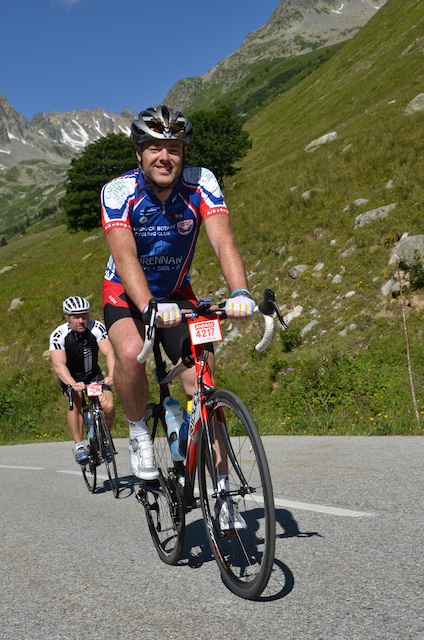
Wary of going out too hard, I opted to take my time at the food station on top. The French know how to do race food and there were baguettes, salami, brie, fruit (fresh & dried) and jellies on offer. I spent 10 minutes eating a bit of everything and refilling water bottles before hitting the descent. Although it was neutralised I pushed it a little bit, simply because it was fun and there weren’t many people around me so it wasn’t crowded and I could choose my line. It was still a bit sobering to come across an ambulance blocking the road where an unknown rider had obviously come a cropper, and we had to carry our bikes through a field to get by. Once the descent was over I faced a 20km run to the base of the next climb at St. Michel de Maurienne. It’s a false flat, very slightly uphill, so the recommendation had been to get into a group and get a tow rather than slogging it out on your own. A few hard efforts saw a few of us latch on to a peloton in front and I just tagged along for the ride from then on. I’d been on the road for more than three hours at this stage and was feeling good, though the combined might of the Telegraphe & Galibier was on the horizon so it was a case of drinking regularly and saving the legs as much as possible.
As we arrived in St. Michel de Maurienne I stopped for a water bottle refill and checked my times. Bang on four hours meant I was still 30 minutes ahead of schedule, despite dawdling at the top of Glandon so I was pretty happy starting the Col du Télégraphe (profile). Again, the recon rides were invaluable as I knew this was a fairly easy climb with a predicable gradient so I settled down to a comfortable rhythm, kept sipping away at my drinks and kept on keeping on. I still prefer to ride a while, stop for a quick stretch and repeat, rather than riding non-stop, so I was slowly passing the same people over and over again. Nevertheless I was still feeling good and climbed the Télégraphe in 1:08, the same time I’d taken on my recon ride. It had taken me 3h50m to climb the combined Télégraphe/Galibier on Tuesday, including a 20m stop at the top of the Télégraphe and a 30m coffee stop at Plan Lachat, so I’d allowed myself 3h30m for the combined climb during the Marmotte, resolving that I wouldn’t be having any lazy stops en route.
After a coke and a stretch I headed off on the short downhill to Valloire, followed by the short climb to the second refuelling stop of the day. I was still facing 15km to the top of the Galibier (profile), so this was another leisurely stop, making sure I ate enough, though time got away from me a bit and I ended up arsing around for ten minutes, slightly longer than planned. The next target was the coffee shop at Plan Lachat which was reached after 40mins of solid climbing, at which point I sat on my arse for another 9 minutes, psyching myself up for the tough final 8km to the top. I was starting to get a little tired by this stage. Nothing serious, but I was looking forward to the summit as I knew there was more than an hour of descending after that before tackling the Alpe. I was also a bit apprehensive about the super steep section from the tunnel to the summit - it was tough enough on the recon ride without starting it with 100km+ and nearly 4000m already in my legs! There was amply opportunity for it to play on my mind as I approached it at a glacial pace, but, once there it wasn’t as bad as expected. In fact, it seemed easier than on the recon ride, probably because I’d been building it up too much over the previous half an hour. The summit loomed and I was greeted by an unexpected food stop. My bike computer read 7h30, so I was still half an hour ahead of schedule, giving me ample time if it all went to shit on the Alpe.
More food, this time with second helpings as I had over an hour to digest on the descent back to Bourg. The first part of the descent is steep and a bit narrow until you get to Col du Lauteret, after which it’s main road all the way back to Bourg. The roads weren’t’ closed to traffic, but all the cars were well aware that bikes (lots of them) were around and we pretty much were given priority. Frence drivers are generally awesome around bikes and don’t mind waiting behind you until it’s safe to pass, but with me hitting speeds up to 70km/h I didn’t have to worry about holding cars up. I did have to hold myself back a bit though, as I found myself powering out of turns and figured I’d be better off saving my legs for the final climb up Alpe d’Huez (profile).
I reached the final food stop at the base of the Alpe in 8:51, almost 40 minutes ahead of schedule and was still feeling reasonably good. I had a quick stop for a handful of jellies, refilled my water bottles and got going. No time to dawdle with the Alpe ahead of me as I knew that there was no respite from here to the finish line. The first two kilometres are over 10%, then it settles down to average around 8% for the rest of the climb, so if things went bad and the day caught up with me, I could lose serious time struggling to the finish. From doing the recon ride I knew where the water stops were and knew roughly the sections where the gradient would ease for a few hundred metres, so I had a few targets in mind. First of those was to get the 10%+ section out of the way at the start. I’d climbed it at just under 290W on Wednesday, which was a bit too hard so I deliberately stayed well under that. I’d built some leeway into my schedule precisely so I’d have time up my sleeve for the Alpe, so it made sense to use some of it and the steeps felt a lot easier.
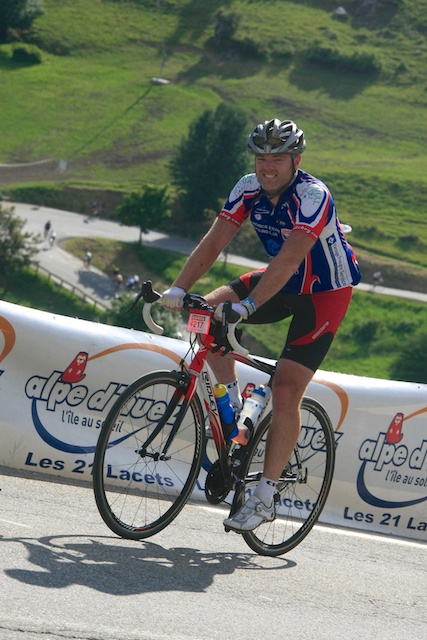
There are 21 hairpins on the way to the top, numbered in descending order, each signposted with the names of previous winners of Tour de France ascents of the Alpe and the water fountain outside the church at turn 16 signified that goal No.1 was complete; the 10% gradients were over and done with and I could now just settle into my normal climbing rhythm and hope it would get me to the finish. I was still stopping every 2km or so for a quick stretch, and mainly passing people rather than being passed which is always a good feeling. By the time I made it to the second church at bend 7 (Goal No.2) I was starting to feel the days exertions. I wasn’t so much tired as just over cycling. My arse was sore from so long in the saddle, my shoulders were stiff & tight and my knee and hamstrings were starting to stiffen up as well. Apart from all that, my legs still felt OK whilst actually cycling, so there was no fear of stopping, but my quick stretch stops were no longer having an effect and I was just willing the finish nearer so I could get off the bloody bike! Still, it was just mind games and minor niggles rather than exhaustion, so I kept plodding away until I finally crested the hump into the village where all the earlier finishers were sitting around, enjoying a beer and offering encouragement to those of us yet to do so. The village marks the end of the serious climbing, though there’s still a kilometre or so until the Marmotte finish, which feels flat, even though it’s between at 3 and 5%! Time to shift into bigger gears, get the speed up again, zip up the jersey and I crossed the finish line in 10:21:31, riding no-hands with a big smile on my face for the finish line photo, only later to discover that the bloody camera was quite a bit after the finish and it captured a more accurate portrayal of how I was feeling at the time :-)

That was it! I’d made it and was filled with a mixture of satisfaction at the accomplishment and relief that I could finally get off the bloody bike! After dropping back my timing chip I got a printed certificate with my official, adjusted time of 9:36:59, which was well inside the silver goal time for my age group, so I got to swap the €10 timing chip deposit for a nice silver medal. I also bought myself a souvenir bike jersey now that I’d finished, as I’m always reluctant to do so before completing an event, as there’s no point having a jersey or t-shirt for a event you didn’t complete. So, as the French say… FIN.
Stats:
10:21:31 total ride time
174.26km distance
4845m climbed
6062 calories burnt
69.9km/h top speed
